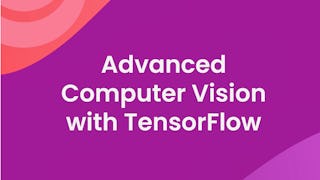This comprehensive course is a hands-on guide to developing and maintaining high-quality datasets for visual AI applications. Learners will gain in-depth knowledge and practical skills in: discovering and implementing various labeling approaches, from manual to fully automated methods; assessing and improving annotation quality for object detection tasks, including identifying and correcting common labeling issues; analyzing the impact of bounding box quality on model performance and developing strategies to enhance label consistency; use advanced tools like FiftyOne and CVAT for dataset exploration, error correction, and annotation refinement; addressing complex challenges in computer vision, such as overlapping detections, occlusions, and small object detection; implementing data augmentation techniques to improve model robustness and generalization; and applying concepts like sample hardness and entropy in the context of model training and dataset curation. Through a combination of theoretical knowledge and hands-on exercises, students will learn to create, maintain, and optimize datasets that lead to more accurate and reliable visual AI models.



Recommended experience
Recommended experience
Details to know

Add to your LinkedIn profile
12 assignments
See how employees at top companies are mastering in-demand skills


Earn a career certificate
Add this credential to your LinkedIn profile, resume, or CV
Share it on social media and in your performance review

There are 4 modules in this course
At the end of this module, you will be able to describe the data-centric AI paradigm and its importance in modern deep learning workflows. You will be able to explain the data and model feedback loop in the context of object detection and instance segmentation tasks. You'll be able to apply FiftyOne to evaluate initial model performance for object detection and instance segmentation tasks. You'll be able to interpret common evaluation metrics for object detection and instance segmentation models.
What's included
15 videos9 readings3 assignments1 plugin
After this module, you will be able to analyze dataset statistic to gain a holistic understanding of the data. You will be able to identify and assess various image quality issues that can impact model performance. You will be able to use FiftyOne to detect and visualize image quality problems, outliers, and diversity issues. And finally, you'll be able to develop strategies to address identified image quality and diversity issues.
What's included
17 videos10 readings5 assignments4 discussion prompts
After this module, you will be able to assess the quality of annotations for object detection tasks. You'll be able to identify common labeling issues such as mislabeled data, hard samples, and occlusions. You will be able to analyze the impact of bounding box on model performance and develop strategies to improve label quality and consistency.
What's included
11 videos6 readings4 assignments3 discussion prompts
After this module, you will be able to apply advanced data-centric AI techniques such as data augmentation and active learning. You will be able to implement an end-to-end workflow for iterative model improvement using FiftyOne. You will be able to develop a strategy for maintaining dataset quality over time and finally be able to synthesize and apply techniques to improve model performance on a given dataset.
What's included
5 videos4 readings1 discussion prompt
Instructor

Offered by
Explore more from Machine Learning


Google Cloud


DeepLearning.AI


Coursera Project Network
Why people choose Coursera for their career




New to Machine Learning? Start here.

Open new doors with Coursera Plus
Unlimited access to 10,000+ world-class courses, hands-on projects, and job-ready certificate programs - all included in your subscription
Advance your career with an online degree
Earn a degree from world-class universities - 100% online
Join over 3,400 global companies that choose Coursera for Business
Upskill your employees to excel in the digital economy
Frequently asked questions
Access to lectures and assignments depends on your type of enrollment. If you take a course in audit mode, you will be able to see most course materials for free. To access graded assignments and to earn a Certificate, you will need to purchase the Certificate experience, during or after your audit. If you don't see the audit option:
The course may not offer an audit option. You can try a Free Trial instead, or apply for Financial Aid.
The course may offer 'Full Course, No Certificate' instead. This option lets you see all course materials, submit required assessments, and get a final grade. This also means that you will not be able to purchase a Certificate experience.
When you purchase a Certificate you get access to all course materials, including graded assignments. Upon completing the course, your electronic Certificate will be added to your Accomplishments page - from there, you can print your Certificate or add it to your LinkedIn profile. If you only want to read and view the course content, you can audit the course for free.
You will be eligible for a full refund until two weeks after your payment date, or (for courses that have just launched) until two weeks after the first session of the course begins, whichever is later. You cannot receive a refund once you’ve earned a Course Certificate, even if you complete the course within the two-week refund period. See our full refund policy.
More questions
Financial aid available,




